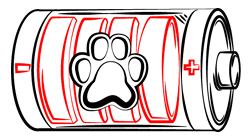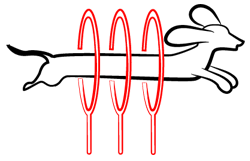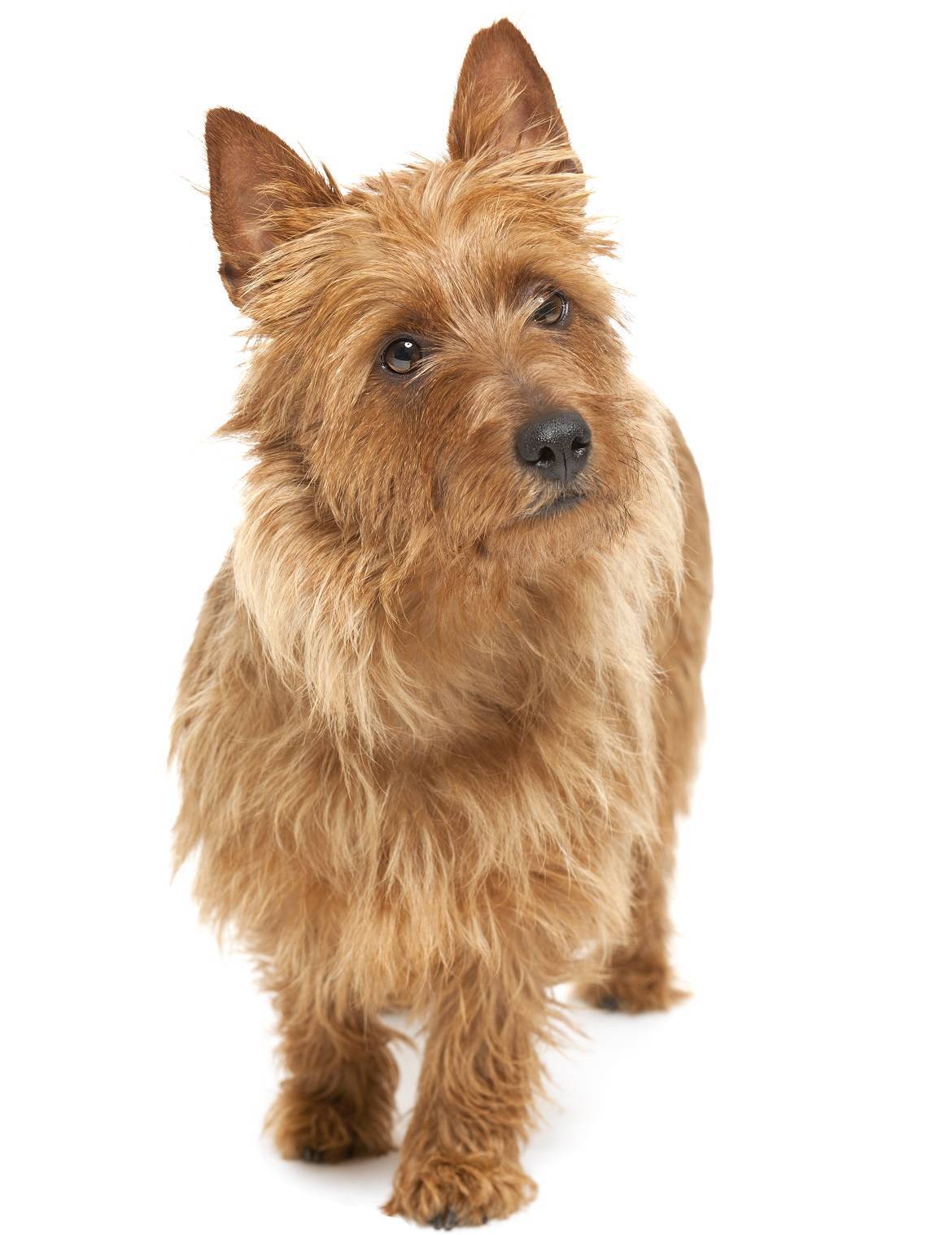
Paws ‘N’ Pups Quickview
Size
| Energy Level
| Trainability
| Paws ‘N’ Pups Rank
|
Characteristics
| Physical Characteristics: Height: 10-11” Weight: 14-16 lbs. Energy Level: High | Colors: The American Kennel Club recognizes the Australian Terrier in the following colors:
|
Health & Longevity
Average Life Span: 12-15 years
For the most part, Australian Terriers are a healthy and sturdy breed with few serious health issues. However, like many small dogs, they can be prone to patellar luxation, a condition in which the kneecap is easily dislocated. Another health issue that can impact small, active dog breeds like the Australian Terrier is Legg-Calve-Perthes disease. This is a rare developmental disease in which the head of the femur bone in the hind leg degenerates, ultimately causing disintegration of the hip joint as well as bone and joint inflammation. The disease often presents itself between five and nine months of age as limping and pain, and surgery is usually required to correct the problem. Both of these conditions are believed to be genetic and are aggravated by excessive weight.
Diabetes can occur in Australian Terriers, although the reason is unknown. Australian Terriers with diabetes should not be bred. Thyroid disorders may also occur, but these conditions are relatively easy to manage.
Like other terrier breeds, Australian Terriers are prone to skin allergies and itchiness, especially in warmer climates. Imbalance in thyroid function can be the cause of skin irritation, and the problem is easily corrected in this case. More often, environmental factors cause these conditions. Flea and parasite control, limiting harsh chemicals or perfumes in dog products, and a diet supplemented with fatty acids can help.
Other health problems found in Australian Terriers include ear infections, immune deficiency, digestive disorders, and cataracts. In very rare instances, seizures have been reported among Australian Terriers.
Despite these occasional health problems, Australian Terriers are a strong breed with a lifespan of 12-15 years.
Temperament & Train-ability
The Australian Terrier is affectionate, intelligent, and loves family life. They are also independent, feisty, lively, and upbeat. They make very loving companions, but Australian Terrier owners must have the energy to keep up with this high spirited breed.
The Australian Terrier was developed as a companion breed, and this dog is happiest when in close contact with his owners. Australian Terriers are considered house dogs and should not be kept outdoors or kenneled. They are well suited to apartment living and are perfect for families with children, although they should be supervised around very young children, like all dogs. Australian Terriers are extremely devoted to their owners and will follow them from room to room.
However, Australian Terriers are not always friendly with other dogs. In particular, they become jealous when other dogs are in close proximity to their owners, and male Australian Terriers are typically unable to live peacefully with one another. Bred to hunt vermin, the Australian Terrier still has an extremely strong predator instinct and will chase small animals, including cats. For this reason, it is important to keep Australian Terriers on a leash or fenced in when outdoors. They are extremely impulsive and will chase small animals into the street with no concern for passing cars. Fortunately, the Australian Terrier can be trained to respect the animals he lives with.
Australian Terriers are also natural watchdogs. They are fiercely loyal to their families and have loud, sharp voices to announce approaching danger. They are assertive and occasionally bossy but are not overly aggressive.
Training an Australian Terrier can be somewhat challenging. Although they are extremely intelligent and learn quickly, they are also stubborn and get bored easily. It is important to keep sessions short, fun, and challenging in order to hold the Australian Terrier’s attention. You should also avoid overly harsh training or severe correction, as the breed does not respond well to this treatment. Instead, be patient, firm, and consistent. Motivate your Australian Terrier with treats and praise when earned. Australian Terriers love to dig, which can be addressed with patient training. Crate training is also recommended, beginning as early as possible. This helps with housebreaking and creates a safe haven within the home for the dog.
Grooming
The Australian Terrier is a very simple, easy to maintain breed when it comes to grooming. They shed little and should be brushed weekly for 10-15 minutes. Bathe your dog every three months with a mild shampoo. Australian Terriers have a short, harsh coat that repels dirt and grime and does not mat easily, so frequent bathing is not required. Toenails should be trimmed monthly. Check ears once a week for wax buildup, dirt, or a foul smell that could indicate an ear infection. Because Australian Terriers are prone to ear infection, wipe his ear with a cotton ball dampened in a gentle, veterinarian approved ear cleaner to prevent issues.
Brush your dog’s teeth regularly with dog toothpaste and a soft toothbrush to maintain healthy gums. It is important to introduce the Australian Terrier to grooming early on so that he adjusts smoothly to the process.
Diet
The recommended amount of food for an Australian Terrier is half a cup to one cup of dry food per day. Of course, the amount of food and the best formula for your adult dog depends on individual factors including his age, size, build, activity level, and metabolism. It is important to avoid overfeeding your Australian Terrier because obesity can pose serious health risks for small dogs in particular.
Premium lamb and rice food can be a good choice for the Australian Terrier because it helps prevent skin irritation, along with supplementary fatty acids. Your dog should have access to clean, fresh water at all times.
Looking for an Australian Terrier?
 Find An Australian Terrier Breeder |  Australian Terrier Puppies For Sale | 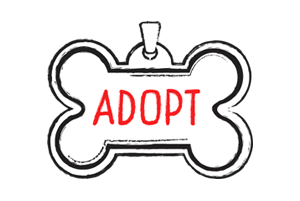 Adopt An Australian Terrier |
Cost
The average Australian Terrier costs around $750, with prices tending to range from $600 to $900. They can be difficult to find, as fewer than 500 puppies are registered each year. There are Australian Terrier Rescues with minimal adoption fees, although availability is generally scarce.
Paws ‘N’ Pups Ranking
Paws ‘N’ Pups ranks every breed out of 4 with 1 being easiest to integrate into your life and 4 being the toughest – The lower the ranking the better.
Ranking takes into account a few basic factors including cost, skill level needed, high vs low maintenance and how critical regular training is to success. The Australian Terrier ranks a 2. They are a loving, loyal, intelligent breed adaptable to most climates and environments, require minimal grooming, and are typically healthy and sturdy. However, they can be stubborn and may have difficulty sharing a home with other pets. They also require an owner who can keep pace with their high energy levels.
Breeds Similar To Australian Terrier
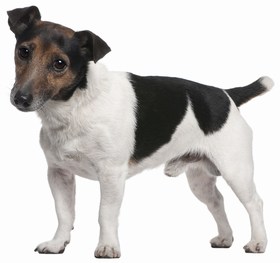 Jack Russell Terrier | 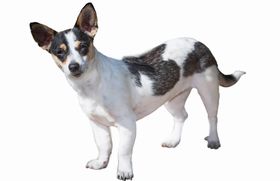 Rat Terrier | 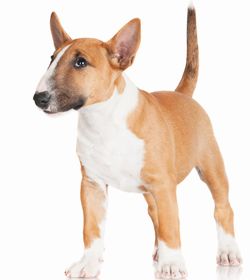 Miniature Bull Terrier | 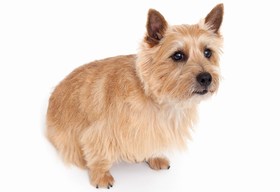 Norwich Terrier |


